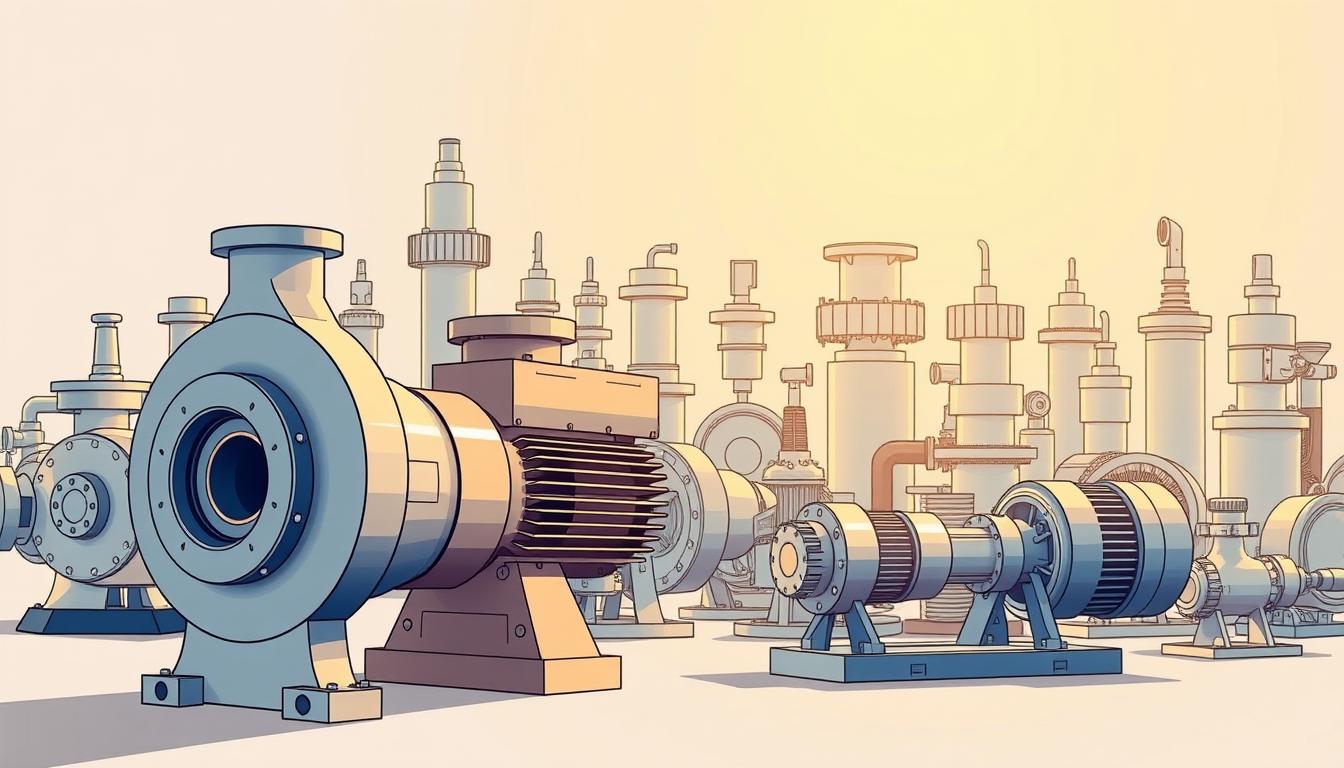Pumps are key in many fields, helping move fluids well. I’ll cover the main pump types and where they’re used. This includes industrial pumps for tough jobs and residential pumps for daily needs. Knowing about these systems shows how vital pumps are in different places.
Understanding Different Types of Pumps:
In my exploration of pumps, I find it essential to distinguish between the two main types: positive displacement pumps and centrifugal pumps. Each type operates on distinctly different principles, impacting pump efficiency and application. Positive displacement pumps function by trapping a specific volume of fluid and forcing it into the discharge pipe. This method allows for consistent output, regardless of the pressure at the outlet, making these pumps effective in scenarios requiring precision, such as hydraulic applications.
Centrifugal pumps, on the other hand, rely on rotational energy to transport fluid. The design consists of a rotating impeller that propels the fluid outward, increasing its velocity and converting it into pressure energy. This pump operation excels in applications where high flow rates are necessary, as centrifugal pumps are generally capable of moving large volumes quickly.
Understanding the mechanics behind each type of pump is key when choosing the right system for a specific application. My insights into the functioning of positive displacement pumps and centrifugal pumps highlight the importance of considering factors such as operating conditions and required pump efficiency. As different tasks demand unique pumping solutions, recognizing these differences empowers one to make informed decisions in pump selection.
Pump Applications in Industrial Settings:
Pumps are key in many industrial settings, like the oil and gas industry. They help move oil, chemicals, and other fluids safely and efficiently. This is vital for daily operations.
In the oil and gas world, pumps are essential for drilling, refining, and distributing. Their performance affects how well and safely things get done.
Water treatment pumps are also critical. They help make sure water is clean and safe. These pumps handle everything from getting raw water to adding chemicals and distributing it.
Knowing how fluid dynamics works in industry is important. It helps pumps work better. Managers and engineers need to think about flow rates, pressure, and what the fluid is like. This ensures pumps do their job well and safely.
Pump Applications in Everyday Life:
Pumps are key in our daily lives, mainly in homes. They keep my home water systems running smoothly. This ensures I have clean water for drinking, cooking, laundry, and gardening.
HVAC pumps also play a big role. They help keep my home at the right temperature. This makes my home comfortable, no matter the weather outside.
I often take for granted the work these pumps do. But knowing how they help us live better makes me appreciate them more. They make our lives easier and more comfortable.
Key Factors to Consider When Choosing a Pump:
When picking a pump, several key factors come to mind. It’s important to know the specific needs of the application. This includes figuring out the flow rate and total dynamic head needed. These details affect the pump’s efficiency and performance.
Energy efficiency is also a big deal. Choosing a pump that’s energy-efficient saves money and helps the environment. It’s a win-win situation.
Performance metrics are also important in my decision. They show how pumps perform under different conditions. I use guides like “The Science of Pump Selection” and “Pump System Design and Optimization” to help make my choice. This way, I pick a pump that meets both performance and efficiency standards.
Pump Maintenance Best Practices:
Effective pump maintenance is key to keeping pump systems running well for a long time. Regular inspections are a must. They help spot problems early, before they get worse. I suggest setting up a schedule to check for leaks, odd noises, and wear signs.
Cleaning pumps regularly is also critical. Dirt and debris can harm efficiency and cause damage. It’s important to use the right cleaning methods for each pump type. This might include using specific solvents or following the manufacturer’s cleaning guidelines.
Lubrication is another important part of pump care. It reduces friction and wear, keeping the pump working at its best. Always use the lubricant recommended by the pump maker. Also, check lubrication levels during inspections.
Pump Technology Innovations and Trends:
In recent years, I’ve seen big changes in pump technology. These changes are making a big difference in both work and home settings. Smart pumps are now common, using advanced sensors and software for real-time monitoring and control.
These systems give users important data. This data helps improve performance and cut down on downtime. It leads to better productivity and saves money.
There’s also a push for pumps that use less energy. New technologies like variable frequency drives (VFDs) and better impeller designs are helping. These changes not only save energy but also help the environment.
Using sustainable materials in pump design is another big trend. This move shows a bigger shift towards green engineering. It meets legal requirements and appeals to those wanting to be more eco-friendly.
Looking at the world of pump technology, it’s clear these changes are more than just trends. They are key steps towards a more efficient and eco-friendly future in moving fluids.
